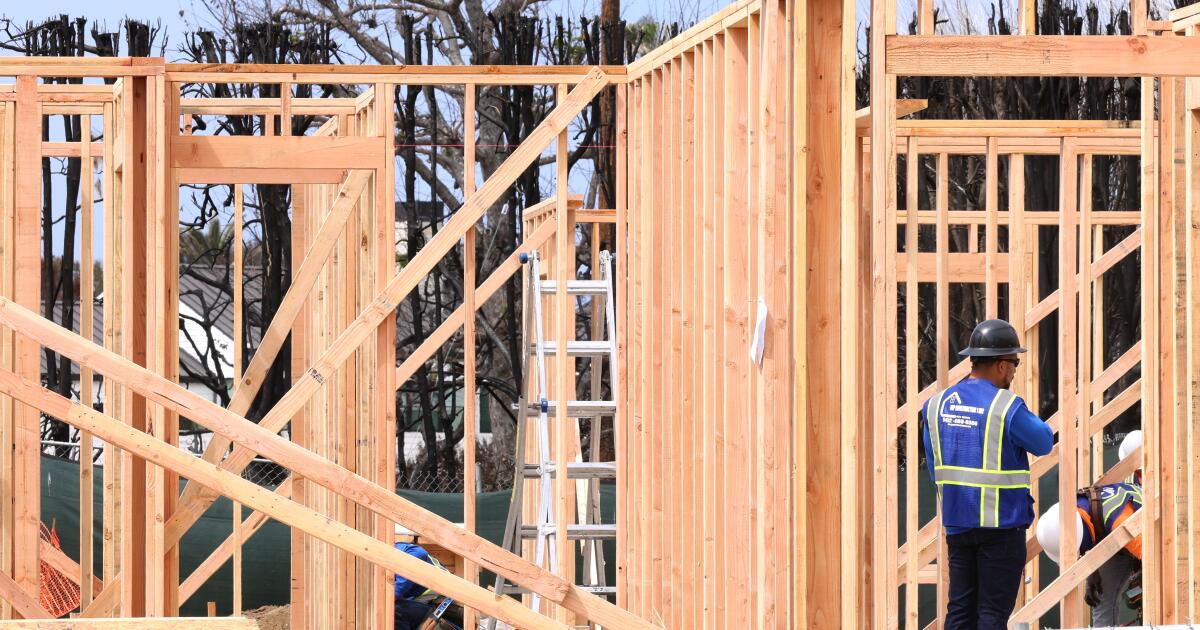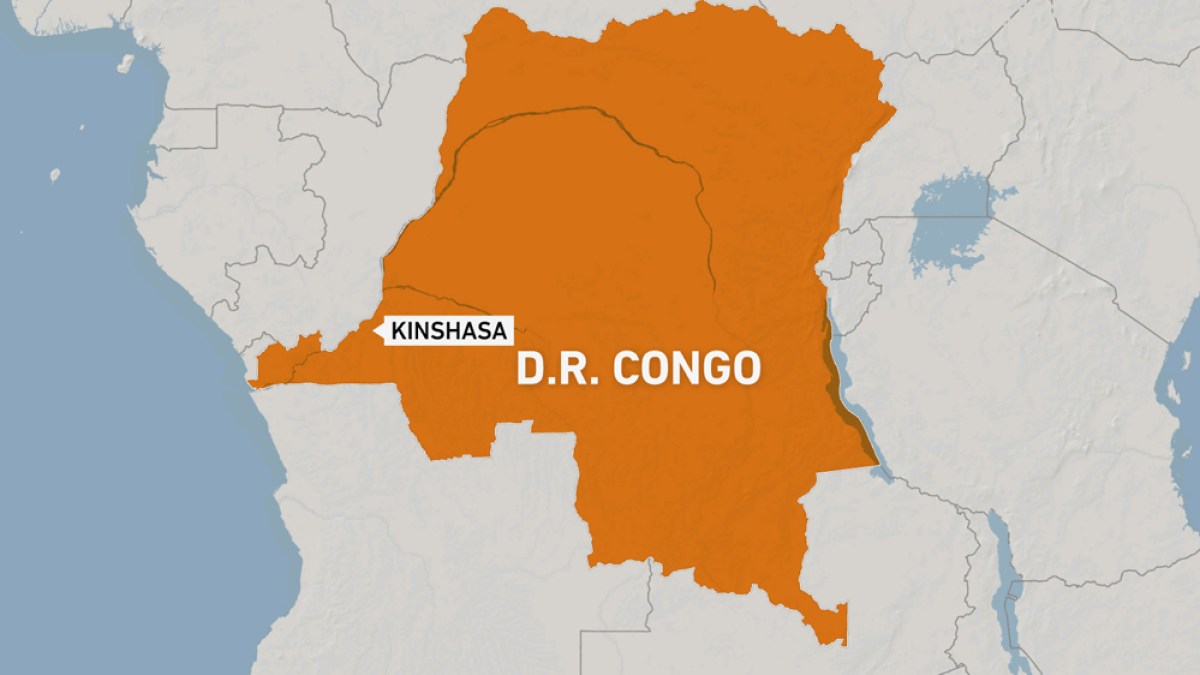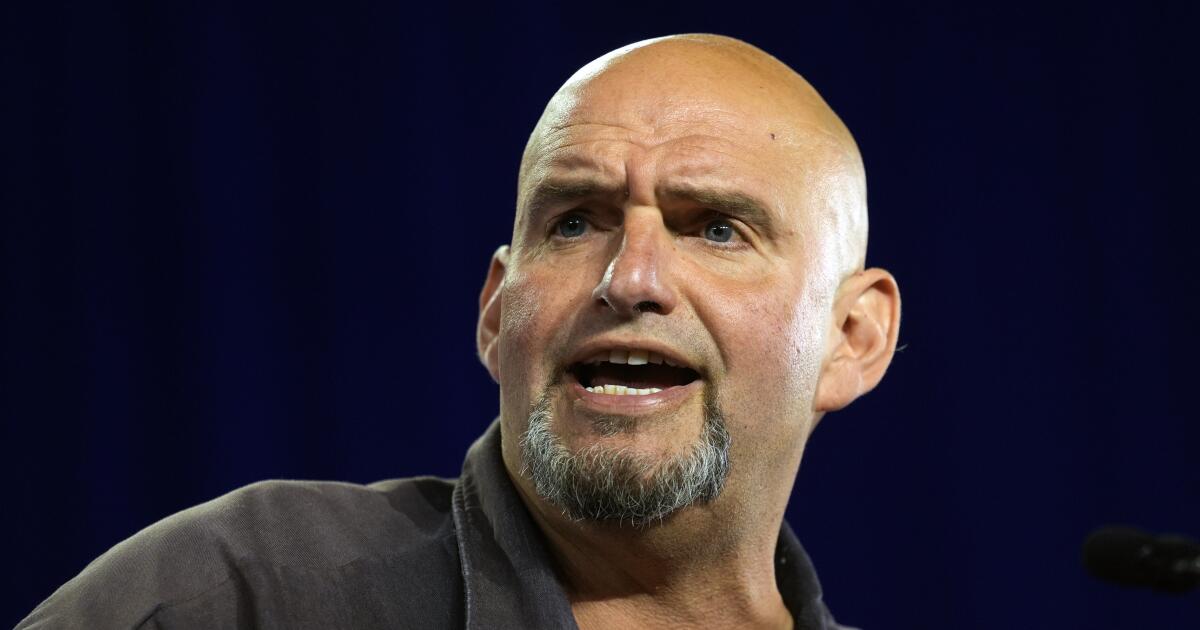AI is coming soon to speed up sluggish permitting for fire rebuilds, officials say.
When survivors from January’s wildfires in Los Angeles County apply to rebuild their homes, their first interaction might be with a robot.
Artificial intelligence will aid city and county building officials in reviewing permit requests, an effort to speed up a process already being criticized as too slow.
“The current pace of issuing permits locally is not meeting the magnitude of the challenge we face,” Gov. Gavin Newsom said when announcing the AI deal in late April.
Some 13,000 homes were lost or severely damaged in the Eaton and Palisades fires, and many families are eager to return as fast as they can. Just eight days after the fire began and while it was still burning, the city received its first home rebuilding application in Pacific Palisades.
Wildfire recovery foundations purchased the AI permitting software, developed by Australian tech firm Archistar, and donated it to the city and county. When property owners submit applications, the software first will examine them for basic compliance with zoning and building codes, suggest corrections and provide a standardized report on the submission for human plan checkers to review.
L.A. County officials hope the software — believed to be the first large-scale use of such permitting technology nationwide after a natural disaster — will slice the time its employees now spend performing menial tasks, such as measuring building heights, counting parking spaces and calculating setbacks, said Mitch Glaser, an assistant deputy director in the county’s planning department.
“We see our planners doing things that are more impactful for our fire survivors,” Glaser said.
Disaster relief and government technology experts said they’re encouraged by the initiative. Municipal permitting is the type of highly technical, repetitive and time-consuming process that AI software could make more efficient, they said, especially as residents are expected to flood local building departments with applications to rebuild.
Still, they warned that for the AI software to be effective, the city and county would have to integrate the technology into its existing systems and quickly correct any errors in implementation. If not, the software could add more bureaucratic hurdles or narrow property owners’ options through overly rigid or incorrect code interpretations.
“This could be fabulously successful and I hope it is,” said Andrew Rumbach, a senior fellow at the Washington-based Urban Institute, where he studies disaster response. “But experimenting with technology in the context of people who’ve lost a lot is risky.”
Immediately after the fires, leaders at all levels of government pledged to waive and streamline rules for property owners to rebuild, promising that regulatory processes wouldn’t hold up residents’ return. Noting the pace of ongoing debris removal, L.A. Mayor Karen Bass has called the region’s recovery “on track to be the fastest in modern California history.” A mayoral spokesperson said that the building department is completing initial permitting reviews twice as fast as before the fire.
More than 200 Pacific Palisades property owners have submitted applications to rebuild or repair their homes, according to a Times analysis of city permitting data, with 11% approved. Last week, 24 property owners submitted applications, the highest amount since the disaster, the analysis shows.
L.A. County, which is responsible for permitting in Altadena and other unincorporated areas, has a separate system for tracking permits which the Times has not been able to independently verify. On Monday, the county listed 476 applications for zoning reviews on its data dashboard, with eight building permits approved. By Tuesday, the number of zoning reviews listed had increased to 486 while the number of building permit approvals dropped to seven.
Besides Newsom, architects, builders and homeowners have grumbled about the permitting process, expressing frustrations at what they say are confusing and inconsistent interpretations of regulations. Last week, actress Mandy Moore, whose family had multiple homes damaged or destroyed in the Eaton fire, blasted the county for “nonsensical red tape” that is making it difficult for her to rebuild.
The wildfire recovery nonprofit Steadfast LA, started by developer and former mayoral candidate Rick Caruso, took the lead on securing the Archistar software and is covering much of the up to $2-million tab for its implementation. LA Rises, the foundation started by Newsom after the fires, will pay Archistar’s $200 fee per application.
Caruso, who declined an interview request from The Times, has said that turning to AI was a no-brainer.
“Bringing AI into permitting will allow us to rebuild faster and safer, reducing costs and turning a process that can take weeks and months into one that can happen in hours or days,” Caruso said in the news release announcing the deal.
Archistar’s AI permitting software has been in development since 2018. The company has contracts with municipalities in Australia and Canada and is expanding to the United States. In the fall, after a successful pilot program in Austin, Texas, Archistar signed an agreement with the city to perform initial assessments of building projects, similar to its intended use in Los Angeles. Austin has not implemented the software yet, but city officials said they believe it could cut preliminary reviews there to one business day from 15.
Once Archistar’s program is online in L.A. County, Glaser said, officials hope it will reduce the first analysis for rebuilding projects to two or three business days from five.
It could save additional time for projects by minimizing revisions and corrections, said Zach Seidl, a Bass spokesperson.
“The biggest potential for reducing permitting time comes from improving the quality of initial plans that homeowners submit to the city,” Seidl said.
Land use consultants and architects in Los Angeles said they were happy with any technology that could hasten approvals of their projects. But they said that AI wouldn’t ease the hardest parts of the permitting process.
Architect Ken Ungar, who is working with roughly two dozen Palisades property owners who are rebuilding, said his biggest headaches come from needing multiple city departments, such as those that oversee fire safety and utilities, to sign off on a project. Applications can get stuck, he said, and even worse sometimes one department requires changes that conflict with another’s rules.
Artificial intelligence, Ungar said, “sounds great. But unless the city of L.A. changes its whole M.O. on how you get building permits, it’s not super helpful.”
The state’s Archistar deal allows the city of Malibu, where the Palisades fire destroyed more than 1,000 homes, to receive the donated software as well. Malibu officials say they’re still deciding on it, noting that the community has specialized building codes addressing development on coastal, hillside and other environmentally sensitive habitats.
Governments are right to look to technology for help in speeding up disaster permitting, Rumbach said, but they also should ensure that human plan checkers provide oversight to account for nuances in zoning and building codes.
“I hope there are people more seasoned in communicating with disaster survivors who are the face of this,” he said. “A lot of people could be frustrated because they don’t want to deal with AI. They want to deal with a person.”
Although L.A. city and county might be the first to use AI for permitting after a major disaster, experts expect the technology to become mainstream soon.
“I’m confident there is no way back,” said Sara Bertran de Lis, director of research and analytics at Johns Hopkins University’s Bloomberg Center for Government Excellence.
L.A. County expects to implement the Archistar software within six weeks after programming and testing, Glaser said. At a recent disaster recovery panel, Bass said the city will do so “in the next couple of months.”





